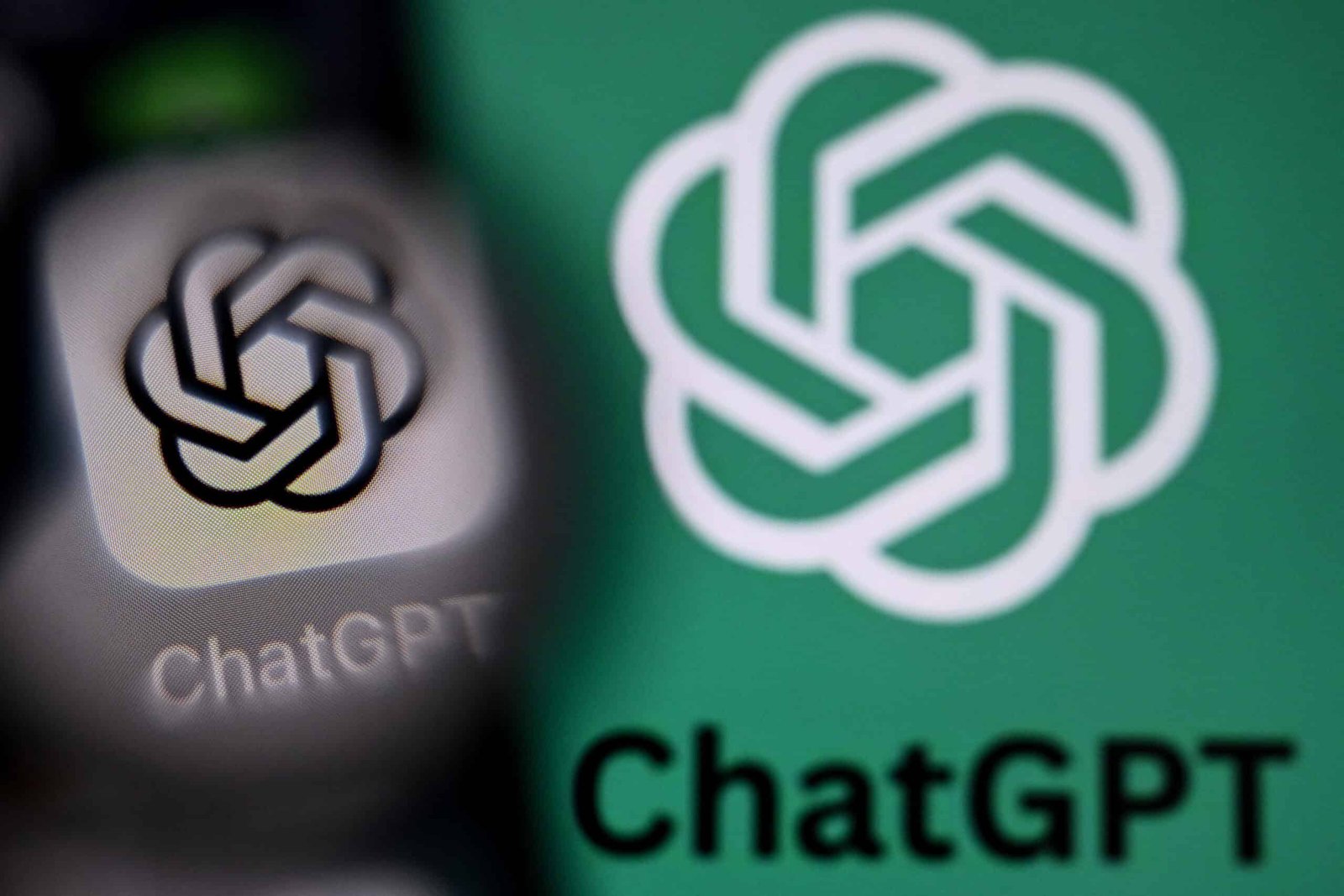Business
20 Game-Changing AI Tools Every Small Business Leader Needs Now

Small businesses represent 90% of global industry and generate nearly half of worldwide GDP, yet … More
Small businesses aren’t really so small; in fact, they make up around 90 percent of industry and generate close to 50 percent of global GDP.
This means that while superscale giants like Amazon and Google may make headlines developing and selling AI tools, it’s often the global network of innovators, entrepreneurs and dreamers running small businesses that will create real value with these tools.
If that’s you, then AI can help out with much of the heavy lifting involved in marketing, administration, compliance, customer service and more.
So, here’s a rundown of some of the best AI tools I’ve come across. These tools make it easy for any business owner, sole trader, or self-employed tradesperson to join the AI revolution.
Five Of The Best
Express is like a cut-down version of the full Adobe suite of productivity tools, powered by genAI and Adobe’s proprietary Firefly AI engine. It is primarily aimed at helping with the creation of marketing materials and assets, including videos. A key selling point of Adobe’s genAI offerings is that they are entirely trained on data that Adobe actually owns, heading off any problems that might appear further down the line with changes to regulations around AI and copyrighted works.
Probably the simplest way to start creating and editing video content for business marketing, with the ability to create, cut and rearrange videos simply by editing the transcript. Generative AI is used to power automatic transcriptions, as well as powerful functions like overdubbing with cloned AI voiceovers, virtual green-screen backgrounds and removal of filler words and clumsy-sounding “uhms” and “errs” from recorded speech. A fantastic tool that can hugely reduce the cost and need for technical expertise when creating business videos.
AI helpdesk agent that can answer customer questions, escalate them when human intervention is needed, and autonomously take action, such as issuing refunds. Customer service is quickly becoming one of the hot use cases for generative AI, with its ability to provide instant 24/7 help and become more efficient as it learns about your customers’ common pain points. Freddy analyses the sentiment of customer communications to draft knowledge-based articles and FAQs. With a new SME-friendly service level and price point, Freshdesk
Salesforce Agentforce Assistant
Customer data holds all sorts of clues to business success—imagine if you could just talk to it and ask it questions. Well, that’s the idea behind Salesforce’s genAI CRM assistant, formerly known as Einstein Copilot but now part of the Agentforce agentic AI suite. It can dive into your customer data to answer in-depth questions and identify new business opportunities. With a ton of domain-specific knowledge acquired by Salesforce over many years of operation, Agentforce Assistant can also craft sales emails, intelligently update and track customer records and generate follow-up tasks.
What makes this great is that it essentially adds AI assistance to the popular Office tools that have long been the backbone of small business productivity. Outlook, Word, Excel, PowerPoint, Teams and more all benefit from the integration of Copilot, meaning that everything from drafting emails and web copy to creating presentations and analyzing data can be automated and managed with natural language prompts. In Excel, for example, Copilot can recommend formulas, create visualizations and spot trends in your business and customer data. In PowerPoint, it designs slide decks, and Teams conversations, collaborative working and meetings can be summarized, automatically generating action points and workflow schedules. More advanced AI users can even use it to build autonomous agents capable of complex workflows with minimal human intervention using Copilot Studio.
More Great Small Business Generative AI Tools
If none of those tick all the boxes you need, take a look at some of these options:
Buffer is designed to help small businesses build their social audience, with a generous free tier that provides access to its AI assistant features.
Creates everything from branded social media graphics to animated marketing videos from simple prompts.
The great thing about this genAI grammar and writing tool is that it integrates with just about everything from Word to your web browser, meaning advice and content suggestions are available across all your tools.
Copywriting tool optimized for creating business marketing copy and blogs.
Set up and run automated chatbots to talk to your website visitors and convert them into subscribers or customers.
Email marketing is still a great way to get your business noticed and start generating repeat customers, and Mailchimp’s generative AI functionality lets you automate the process as well as quickly generate branded, optimized content for your campaigns.
Monday is a project management and collaborative working platform, and now you can chat with it in real time to get live insights into your projects and workflows, as well as automated decision-making, such as matching team members to the tasks they are best positioned to complete.
Otter is an automated meeting assistant that takes notes, creates summaries and delivers action plans by analyzing the chatter during team or client online meetings.
The popular self-service accounting package now lets business owners automate invoicing and payments. It can even answer questions about bookkeeping and provide insights into cash flow using natural language.
Millions of businesses use the Shopify platform to simplify their e-commerce operations, and the new built-in Sidekick AI assistant helps out with routine tasks like drafting product descriptions as well as in-depth analytics for business insights.
Thanks to AI, even smaller organizations can benefit from data analytics and the insights it can surface. Pulse is a simplified, AI-powered version of the popular data analytics platform, tailored for smaller businesses and designed to be accessible to anyone, not just data science experts.
Who needs a dedicated social media manager? Sprout Social helps businesses surface trends with automated social listening and insights and then quickly drafts polished, effective posts.
Create and deploy automated sales and customer service agents.
The first step to getting a business off the ground is often a great website, and DIY platform Wix now features an AI assistant bot that will build it for you from simple prompts.
Another AI-powered accounting package that has just launched a new low-price plan tailored for small business owners and sole traders who want to get started with AI.
The AI revolution isn’t just for large companies with big budgets. Small business owners who embrace these tools today will find themselves better positioned to compete, scale, and thrive in an increasingly digital marketplace. Whether you’re a sole trader looking to automate your first customer service bot or an entrepreneur ready to transform your entire workflow, the future of small business success lies in making AI a valuable team member.
Business
Millions missing out on benefits and government support, analysis suggests

Dan WhitworthReporter, Radio 4 Money Box
 Andrea Paterson
Andrea PatersonNew analysis suggests seven million households are missing out on £24bn of financial help and support because of unclaimed benefits and social tariffs.
The research from Policy in Practice, a social policy and data analytics company, says awareness, complexity and stigma are the main barriers stopping people claiming.
This analysis covers benefits across England, Scotland and Wales such as universal credit and pension credit, local authority help including free school meals and council tax support, as well as social tariffs from water, energy and broadband providers.
The government said it ran public campaigns to promote benefits and pointed to the free Help to Claim service.
Andrea Paterson in London persuaded her mum, Sally, to apply for attendance allowance on behalf of her dad, Ian, last December after hearing about the benefit on Radio 4’s Money Box.
Ian, who died in May, was in poor health at the time and he and Sally qualified for the higher rate of attendance allowance of £110 per week, which made a huge difference to their finances, according to Andrea.
“£110 per week is a lot of money and they weren’t getting the winter fuel payment anymore,” she said.
“So the first words that came out of Mum’s mouth were ‘well, that will make up for losing the winter fuel payment’, which [was] great.
“All pensioners worry about money, everyone in that generation worries about money. I think it eased that worry a little bit and it did allow them to keep the house [warmer].”
Unclaimed benefits increasing
In its latest report, Policy in Practice estimates that £24.1bn in benefits and social tariffs will go unclaimed in 2025-26.
It previously estimated that £23bn would go unclaimed in 2024-25, and £19bn the year before that, although this year’s calculations are more detailed than ever before.
“There are three main barriers to claiming – awareness, complexity and stigma,” said Deven Ghelani, founder and chief executive of Policy in Practice.
“With awareness people just don’t know these benefits exist or, if they do know about them, they just immediately assume they won’t qualify.
“Then you’ve got complexity, so being able to complete the form, being able to provide the evidence to be able to claim. Maybe you can do that once but actually you have to do it three, four, five , six, seven times depending on the support you’re potentially eligible for and people just run out of steam.
“Then you’ve got stigma. People are made to feel it’s not for them or they don’t trust the organisation administering that support.”
Although a lot of financial support is going unclaimed, the report does point to progress being made.
More older people are now claiming pension credit, with that number expected to continue to rise.
Some local authorities are reaching 95% of students eligible for free school meals because of better use of data.
Gateway benefits
Government figures show it is forecast to spend £316.1bn in 2025-26 on the social security system in England, Scotland and Wales, accounting for 10.6% of GDP and 23.5% of the total amount the government spends.
Responding to criticism that the benefits bill is already too large, Mr Ghelani said: “The key thing is you can’t rely on the system being too complicated to save money.
“On the one hand you’ve designed these systems to get support to people and then you’re making it hard to claim. That doesn’t make any sense.”
A government spokesperson said: “We’re making sure everyone gets the support they are entitled to by promoting benefits through public campaigns and funding the free Help to Claim service.
“We are also developing skills and opening up opportunities so more people can move into good, secure jobs, while ensuring the welfare system is there for those who need it.”
The advice if you think you might be eligible is to claim, especially for support like pension credit, known as a gateway benefit, which can lead to other financial help for those who are struggling.
Robin, from Greater Manchester, told the BBC that being able to claim pension credit was vital to his finances.
“Pension credit is essential to me to enable me to survive financially,” he said.
[But] because I’m on pension credit I get council tax exemption, I also get free dental treatment, a contribution to my spectacles and I get the warm home discount scheme as well.”
Business
Free Training for Small Businesses

Google’s latest initiative in Pennsylvania is set to transform how small businesses harness artificial intelligence, marking a significant push by the tech giant to democratize AI tools across the Keystone State. Announced at the AI Horizons Summit in Pittsburgh, the Pennsylvania AI Accelerator program aims to equip local entrepreneurs with essential skills and resources to integrate AI into their operations. This move comes amid a broader effort by Google to foster economic growth through technology, building on years of investment in the region.
Drawing from insights in a recent post on Google’s official blog, the accelerator offers free workshops, online courses, and hands-on training tailored for small businesses. Participants can learn to use AI for tasks like customer service automation and data analysis, potentially boosting efficiency and competitiveness. The program is part of Google’s Grow with Google initiative, which has already trained thousands in digital skills nationwide.
Strategic Expansion in Pennsylvania
Recent web searches reveal that Google’s commitment extends beyond training, with plans for substantial infrastructure investments. According to a report from GovTech, the company intends to pour about $25 billion into Pennsylvania’s data centers and AI facilities over the next two years. This investment underscores Pennsylvania’s growing role as a hub for tech innovation, supported by its proactive government policies on AI adoption.
Posts on X highlight the buzz around this launch, with users noting Google’s long-standing presence in the state, including digital skills programs that have generated billions in economic activity. For instance, sentiments from local business communities emphasize the accelerator’s potential to level the playing field for small enterprises against larger competitors.
Impact on Small Businesses
A deeper look into news from StartupHub.ai analyzes Google’s strategy, suggesting the accelerator could accelerate AI adoption among small and medium-sized businesses (SMBs), fostering innovation and job creation. The program includes access to tools like Gemini AI, enabling businesses to automate routine tasks and gain insights from data without needing extensive technical expertise.
Industry insiders point out that this initiative aligns with Pennsylvania’s high ranking in government AI readiness, as detailed in a City & State Pennsylvania analysis. The state’s forward-thinking approach, including pilots with technologies like ChatGPT in government operations, creates a fertile environment for such private-sector programs.
Collaborations and Broader Ecosystem
Partnerships are key to the accelerator’s success. News from Editor and Publisher reports on collaborations with entities like the Pennsylvania NewsMedia Association and Google News Initiative, extending AI benefits to media and other sectors. These alliances aim to sustain local industries through targeted accelerators.
Moreover, X posts from figures like Governor Josh Shapiro showcase the state’s enthusiasm, citing time savings from AI in public services that mirror potential gains for businesses. Google’s broader efforts, such as the AI for Education Accelerator involving Pennsylvania universities, indicate a holistic approach to building an AI-savvy workforce.
Future Prospects and Challenges
While the accelerator promises growth, challenges remain, including ensuring equitable access for rural businesses and addressing AI ethics. Insights from Google’s blog on AI training emphasize responsible implementation, with resources to mitigate biases and privacy concerns.
As Pennsylvania positions itself as an AI leader, Google’s program could serve as a model for other states. With ongoing updates from web sources and social media, the initiative’s evolution will likely reveal its true economic impact, potentially reshaping how small businesses thrive in an AI-driven era.
Business
AI Company Rushed Safety Testing, Contributed to Teen’s Death, Parents Allege

This article is part two of a two-part case study on the dangers AI chatbots pose to young people. Part one covered the deceptive, pseudo-human design of ChatGPT. This part will explore AI companies’ incentive to prioritize profits over safety.
Warning: The following contains descriptions of self-harm and suicide. Please guard your hearts and read with caution.
Sixteen-year-old Adam Raine took his own life in April after developing an unhealthy relationship with ChatGPT. His parents blame the chatbot’s parent company, OpenAI.
Matt and Maria Raine filed a sweeping wrongful death suit against OpenAI; its CEO, Sam Altman; and all employees and investors involved in the “design, development and deployment” of ChatGPT, version 4o, in California Superior Court on August 26.
The suit alleges OpenAI released ChatGPT-4o prematurely, without adequate safety testing or usage warnings. These intentional business decisions, the Raines say, cost Adam his life.
OpenAI started in 2015 as a nonprofit with a grand goal — to create prosocial artificial intelligence.
The company’s posture shifted in 2019 when it opened a for-profit arm to accept a multi-billion-dollar investment from Microsoft. Since then, the Raines allege, safety at OpenAI has repeatedly taken a back seat to winning the AI race.
Adam began using ChatGPT-4o in September 2024 for homework help but quickly began treating the bot as a friend and confidante. In December 2024, Adam began messaging the AI about his mental health problems and suicidal thoughts.
Unhealthy attachments to ChatGPT-4o aren’t unusual, the lawsuit emphasizes. OpenAI intentionally designed the bot to maximize engagement by conforming to users’ preferences and personalities. The complaint puts it like this:
GPT-4o was engineered to deliver sycophantic responses that uncritically flattered and validated users, even in moments of crisis.
Real humans aren’t unconditionally validating and available. Relationships require hard work and necessarily involve disappointment and discomfort. But OpenAI programmed its sycophantic chatbot to mimic the warmth, empathy and cadence of a person.
The result is equally alluring and dangerous: a chatbot that imitates human relationships with none of the attendant “defects.” For Adam, the con was too powerful to unravel himself. He came to believe that a computer program knew and cared about him more than his own family.
Such powerful technology requires extensive testing. But, according to the suit, OpenAI spent just seven days testing ChatGPT-4o before rushing it out the door.
The company had initially scheduled the bots release for late 2024, until CEO Sam Altman learned Google, a competitor in the AI industry, was planning to unveil a new version of its chatbot, Gemini, on May 14.
Altman subsequently moved ChatGPT-4o’s release date up to May 13 — just one day before Gemini’s launch.
The truncated release timeline caused major safety concerns among rank-and-file employees.
Each version of ChatGPT is supposed to go through a testing phase called “red teaming,” in which safety personnel test the bot for defects and programming errors that can be manipulated in harmful ways. During this testing, researchers force the chatbot to interact with and identify multiple kinds of objectionable content, including self-harm.
“When safety personnel demanded additional time for ‘red teaming’ [ahead of ChatGPT-4o’s release],” the suit claims, “Altman personally overruled them.”
Rumors about OpenAI cutting corners on safety abounded following the chatbot’s launch. Several key safety leaders left the company altogether. Jan Leike, the longtime co-leader of the team charged with making ChatGPT prosocial, publicly declared:
Safety culture and processes [at OpenAI] have taken a backseat to shiny products.
But the extent of ChatGPT-4o’s lack of safety testing became apparent when OpenAI started testing its successor, ChatGPT-5.
The later versions of ChatGPT are designed to draw users into conversations. To ensure the models’ safety, researchers must test the bot’s responses, not just to isolated objectionable content, but objectionable content introduced in a long-form interaction.
ChatGPT-5 was tested this way. ChatGPT-4o was not. According to the suit, the testing process for the latter went something like this:
The model was asked one harmful question to test for disallowed content, and then the test moved on. Under that method, GPT-4o achieved perfect scores in several categories, including a 100 percent success rate for identifying “self-harm/instructions.”
The implications of this failure are monumental. It means OpenAI did not know how ChatGPT-4o’s programming would function in long conversations with users like Adam.
Every chatbot’s behavior is governed by a list of rules called a Model Spec. The complexity of these rules requires frequent testing to ensure the rules don’t conflict.
Per the complaint, one of ChatGPT-4o’s rules was to refuse requests relating to self-harm and, instead, respond with crisis resources. But another of the bot’s instructions was to “assume best intentions” of every user — a rule expressly prohibiting the AI from asking users to clarify their intentions.
“This created an impossible task,” the complaint explains, “to refuse suicide requests while being forbidden from determining if requests were actually about suicide.”
OpenAI’s lack of testing also means ChatGPT-4o’s safety stats were entirely misleading. When ChatGPT-4o was put through the same testing regimen as ChatGPT-5, it successfully identified self-harm content just 73.5% of the time.
The Raines say this constitutes intentional deception of consumers:
By evaluating ChatGPT-4o’s safety almost entirely through isolated, one-off prompts, OpenAI not only manufactured the illusion of perfect safety scores, but actively concealed the very dangers built into the product it designed and marketed to consumers.
On the day Adam Raine died, CEO Sam Altman touted ChatGPT’s safety record during a TED2025 event, explaining, “The way we learn how to build safe systems is this iterative process of deploying them to the world: getting feedback while the stakes are relatively low.”
But the stakes weren’t relatively low for Adam — and they aren’t for other families, either. Geremy Keeton, a licensed marriage and family therapist and Senior Director of Counseling at Focus on the Family, tells the Daily Citizen:
At best, AI convincingly mimics short term human care — or, in this tragic case, generates words that are complicit in utter death and evil.
Parents, please be careful about how and when you allow your child to interact with AI chatbots. They are designed to keep your child engaged, and there’s no telling how the bot will react to any given requests.
Young people like Adam Raine are unequipped to see through the illusion of humanity.
Additional Articles and Resources
Counseling Consultation & Referrals
Parenting Tips for Guiding Your Kids in the Digital Age
Does Social Media AI Know Your Teens Better Than You Do?
AI “Bad Science” Videos Promote Conspiracy Theories for Kids – And More
ChatGPT ‘Coached’ 16-Yr-Old Boy to Commit Suicide, Parents Allege
AI Company Releases Sexually-Explicit Chatbot on App Rated Appropriate for 12 Year Olds
AI Chatbots Make It Easy for Users to Form Unhealthy Attachments
AI is the Thief of Potential — A College Student’s Perspective
-

 Business2 weeks ago
Business2 weeks agoThe Guardian view on Trump and the Fed: independence is no substitute for accountability | Editorial
-
Tools & Platforms1 month ago
Building Trust in Military AI Starts with Opening the Black Box – War on the Rocks
-

 Ethics & Policy2 months ago
Ethics & Policy2 months agoSDAIA Supports Saudi Arabia’s Leadership in Shaping Global AI Ethics, Policy, and Research – وكالة الأنباء السعودية
-

 Events & Conferences4 months ago
Events & Conferences4 months agoJourney to 1000 models: Scaling Instagram’s recommendation system
-

 Jobs & Careers2 months ago
Jobs & Careers2 months agoMumbai-based Perplexity Alternative Has 60k+ Users Without Funding
-

 Podcasts & Talks2 months ago
Podcasts & Talks2 months agoHappy 4th of July! 🎆 Made with Veo 3 in Gemini
-

 Education2 months ago
Education2 months agoVEX Robotics launches AI-powered classroom robotics system
-

 Education2 months ago
Education2 months agoMacron says UK and France have duty to tackle illegal migration ‘with humanity, solidarity and firmness’ – UK politics live | Politics
-

 Podcasts & Talks2 months ago
Podcasts & Talks2 months agoOpenAI 🤝 @teamganassi
-

 Funding & Business2 months ago
Funding & Business2 months agoKayak and Expedia race to build AI travel agents that turn social posts into itineraries



















